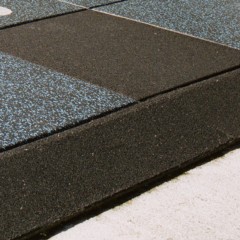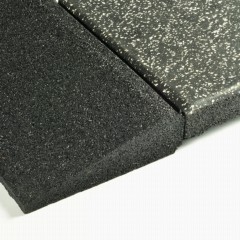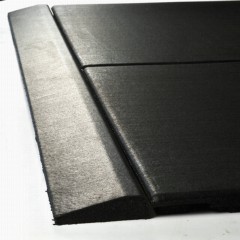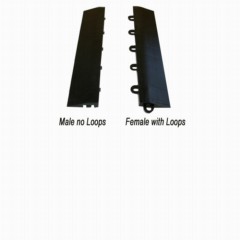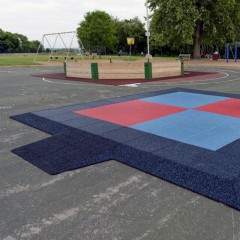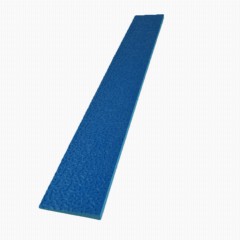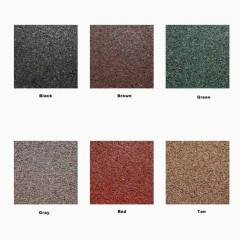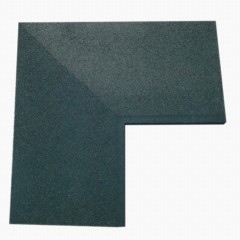Options for Floor Reducers
If you’ve ever stubbed your big toe going from one room to another because of uneven flooring heights, you understand the importance of floor reducers. These vinyl, plastic, or rubber transition strips create a gradual ramped edge between the two floor heights, eliminating tripping hazards. At Greatmats, we carry the widest range of reducer transition strips to match your flooring needs in multiple heights and colors. (Your big toe can thank us later!)
Types of Floor Reducer Strips
When securing the floor reducer strips to the main floor, the format you’ll use depends on what types of floor you have. If you purchased your main flooring from Greatmats, it’s far easier to find the perfect reducer strip.
- Interlocking edge: Some interlocking edge tiles have reducers that securely interlock into the edge of the floor.
- Puzzle edge: Some tiles may have reducers that match the puzzle edge on the tiles for a secure fit.
- Hook and loop: Some reducer strips have a hidden hook-and-loop edge that connects seamlessly to the existing tiles.
- Glue down: Some transition strips require gluing between the two segments of uneven flooring.
For example, with our popular StayLock PVC tiles, we offer ramped border strips that connect securely to the interlocking edges. For the perfect finishing touch, we have small corner pieces that connect to the interlocking system, creating a seamless border edge with full coverage.
Materials for Floor Reducers
You can select among several different materials for the floor reducers, helping you match the floor and border edging. Some of the materials for our reducers include:
- Rubber
- PVC (poly-vinyl chloride)
- Foam
- Polypropylene plastic
- Polyethylene plastic
- Rubber foam
Commercial rubber transition strips are common. Whether you need a gym floor transition strip or a rubber flooring reducer for an industrial warehouse, factory, or garage, we have multiple sizes available. Some of the most popular sizes include:
- 3/4'' rubber transition strip
- 1 inch rubber transition strip
- 2 inch rubber transition strip
- 4 inch wide rubber transition strip
Reducer Transition Strip Features and Benefits
Some of the key benefits and features of our reducer transition strip products include:
- Varying thicknesses of 0.25 to 2.5 inches
- Eliminate the lip between uneven flooring sections
- Option for adding a ramp
- Easier for wheelchairs, strollers, walkers, and carts to move from one room to another
- Can connect tightly to most existing floors
- Can work with laminate, vinyl, rubber, plastic, or foam floors
- Multiple colors available to try to match your existing flooring
- Eliminating the trip hazard helps with liability in commercial buildings
- Some strips are bright yellow to provide a safety warning about the edge in darker rooms
- Easy to cut the length of the strip to match the needed size
Where to Use Floor Reducers
When you are selecting among Greatmats flooring products, our customer service team can give you advice on which models have a matching floor reducer available. You can use our floor reducers in any areas where you’d install our flooring, including:
- Homes
- Nursing homes
- Rehabilitation facilities
- Medical facilities
- Commercial facilities
- Retail facilities
- Industrial facilities
- Entrances to buildings
- Warehouses
- Garages
- Gyms
- Playgrounds
If you have areas where people are using wheelchairs, walkers, carts, rolling luggage, strollers, or other wheeled equipment, our Greatmats floor reducers are the perfect solution to avoid bumpy transitions between different kinds of uneven flooring.
For a gym with a weightlifting area that has rubber floors with extra-thick mats, the border edging reduces the trip hazard from the added thickness.
Floor Reducers Q&A
What is the purpose of rubber flooring transition strips?
The purpose of
rubber floor transition strips is to reduce the lip on installed flooring and cut down on the tripping hazard. The strip is flat on one end and gradually increases in height until matching the height of the raised floor. Some models meet ADA specifications for use of a wheelchair.
Are there carpet-to-tile transition strips for modular carpet tiles?
At Greatmats, we do offer
carpet-to-tile transition strips for the edges of modular carpet tiles. These strips reduce the trip hazard when transitioning from one flooring to the raised modular carpet tiles that are slightly higher than the adjacent flooring. The ramp strips allow for smooth rolling of carts or walkers.
What are the advantages of using a rubber ramp for wheelchairs?
The
advantages of using a rubber ramp for wheelchairs include the naturally grippy texture of rubber that prevents spinning wheels or slips. Rubber ramps can withstand any weather and work perfectly for indoor or outdoor use. Many of our rubber ramps consist of recycled materials, making them eco-friendly.
What floor transition strips work for uneven edges?
Finding
floor transition strips for uneven edges may seem challenging, but Greatmats has several different options available. We carry transition strips of varying heights, widths, and colors, making it easier to find the perfect material. Our customer service team can help you zero in on the model you need.
What kind of rubber playground border is needed for interlocking tiles?
The right kind of
rubber playground border for interlocking tiles usually includes a ramp that’s ADA-accessible. A rubber ramp that’s wide enough to accommodate wheelchairs, strollers, and wagons provides a safe and easy means of transitioning onto and off of the playground. The rest of the border can match the ramp’s color and reduce the impact of the lip of the playground tiles. At Greatmats, we carry multiple borders that securely connect to our playground tiles.
 $6288 /Tile You Save 10%$52.40/sqftShop$9702 /Tile You Save 10%$24.26/sqftShop$6088 /Tile You Save 10%$50.73/sqftShop$32414 /Each You Save 19%$24.46/sqftShop$1776 /Each You Save 19%$35.52/sqftShips Out in 1-3 Working DaysShop$7735 Starting At You Save 15%$16.56/sqftShop$8330 Starting At You Save 15%$17.84/sqftShop$8479 Starting At You Save 14%$18.16/sqftShop$9297 Starting At You Save 15%$19.91/sqftShop$9595 Starting At You Save 14%$20.55/sqftShop$9818 Starting At You Save 14%$21.02/sqftShop$6396 /Each You Save 15%$13.70/sqftShop$6545 /Each You Save 14%$14.01/sqftShop$6991 /Each You Save 15%$14.97/sqftShop$7586 /Each You Save 15%$16.24/sqftShop$7884 Starting At You Save 14%$36.84/sqftShop
$6288 /Tile You Save 10%$52.40/sqftShop$9702 /Tile You Save 10%$24.26/sqftShop$6088 /Tile You Save 10%$50.73/sqftShop$32414 /Each You Save 19%$24.46/sqftShop$1776 /Each You Save 19%$35.52/sqftShips Out in 1-3 Working DaysShop$7735 Starting At You Save 15%$16.56/sqftShop$8330 Starting At You Save 15%$17.84/sqftShop$8479 Starting At You Save 14%$18.16/sqftShop$9297 Starting At You Save 15%$19.91/sqftShop$9595 Starting At You Save 14%$20.55/sqftShop$9818 Starting At You Save 14%$21.02/sqftShop$6396 /Each You Save 15%$13.70/sqftShop$6545 /Each You Save 14%$14.01/sqftShop$6991 /Each You Save 15%$14.97/sqftShop$7586 /Each You Save 15%$16.24/sqftShop$7884 Starting At You Save 14%$36.84/sqftShop